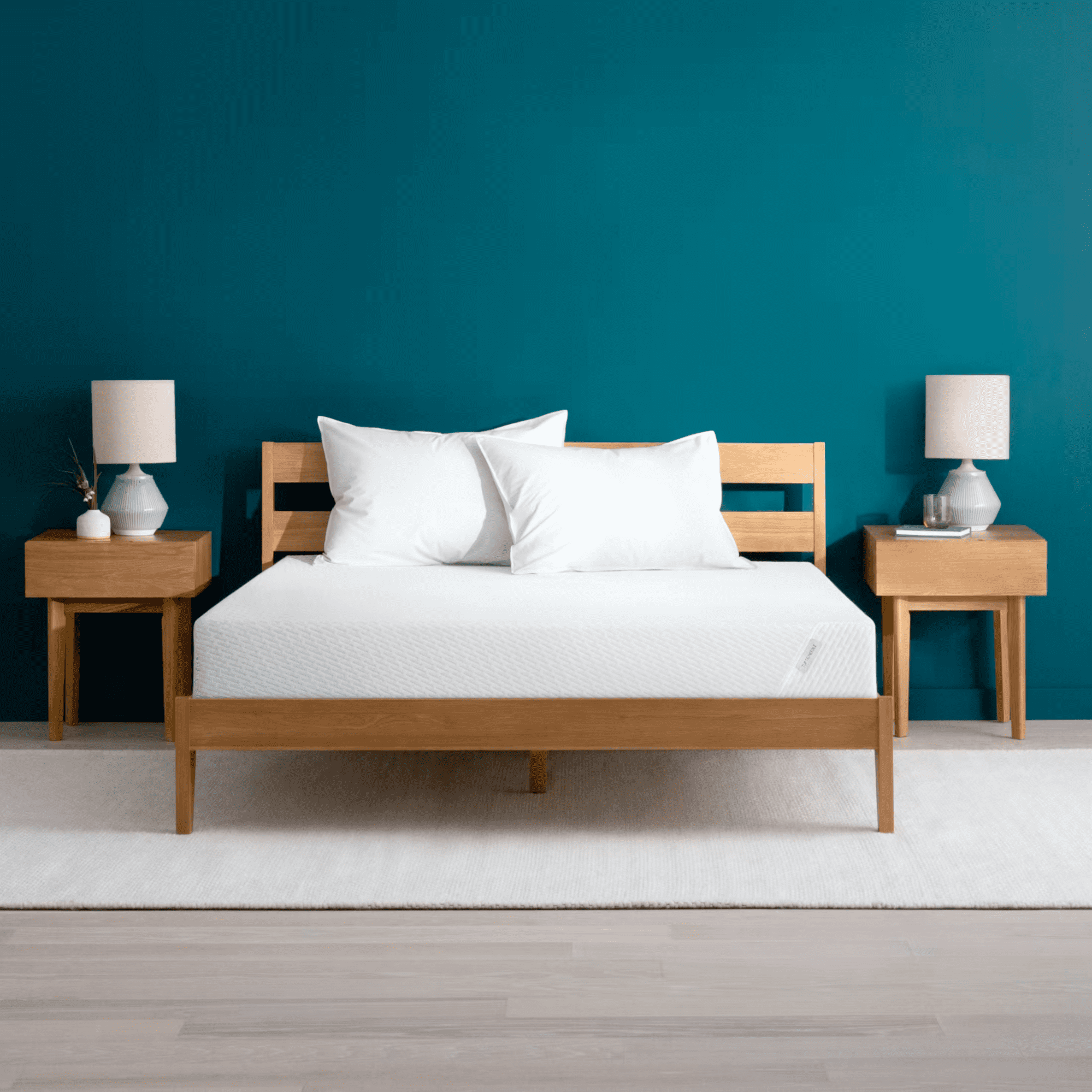You spend thousands of hours lying on your mattress during its lifespan, so it’s important to keep it clean. Over time, mattresses can absorb body oils, grime, dust, and stains. Regularly cleaning your mattress can help keep it performing at its best.
Cleaning your mattress may sound like a chore, but it’s actually relatively easy. We’ll discuss how to clean a mattress step by step so you can give your mattress the care it needs.
Step by Step: How to Clean a Mattress
Cleaning a mattress is a fairly simple process that involves removing visible stains and dirt, followed by neutralizing odors.
Gather Cleaning Supplies
You can clean your mattress with normal household supplies. Before you get started, gather:
- Clean cloths
- A vacuum cleaner
- Baking soda
- Gentle cleaning solution
For use on light stains, you can make a cleaning solution out of dish soap and water. Tougher stains and odors may need a slightly stronger solution. To make a quick at-home mattress cleaner, mix equal parts water and white vinegar, or water and hydrogen peroxide. Vinegar and hydrogen peroxide both work as disinfectants and effective stain removers, although hydrogen peroxide may bleach colored fabrics.
Be sure to read the labels before use, and do not mix any products if you’re not familiar with the outcome.
Strip the Bed
For easy access to your mattress and to ensure everything is thoroughly clean, take off all the bedding, including the mattress topper. Check the care instructions for each item and wash as directed. Bedding that comes into contact with the sleeper, such as sheets and pillowcases, should be washed more frequently.
Read the Care Instructions
Always double-check the care instructions for the mattress itself before cleaning. Some models, particularly those containing memory foam, are easily damaged and need to be cleaned very carefully.
Vacuum the Surface
Using your vacuum’s upholstery attachment, vacuum both sides of the mattress to remove dust and dirt from the surface of the bed.
Spot Clean Visible Stains
Next, tackle any visible stains using the appropriate cleaner for the type of stain. Blood, sweat, and urine can be cleaned with a soap-and-water solution. Avoid using hot water on bodily fluid stains, as this can set them more firmly into the fabric. For other stains, you can use a mixture of water and vinegar or a mixture of water and hydrogen peroxide.
Dip a clean cloth into the cleaning solution, remove the excess liquid, and gently blot the stain. Be sure to blot rather than rub. You can repeat this action multiple times until you’ve removed as much of the stain as possible. The sooner you address a stain, the easier it will be to remove it.
Sprinkle Baking Soda
Sprinkling baking soda on the mattress can help neutralize strong odors. For best results, cover the entire top surface of the mattress in a thin layer of baking soda. Once you’ve applied the baking soda, let it sit for 2 to 24 hours to absorb odors.
Air Out the Mattress
To further dissipate any remaining smells, air out the room by opening windows and doors.
Vacuum the Baking Soda
Remove the baking soda with a vacuum and perform a quick check to determine if your mattress is clean or if you need to repeat any of the steps.
Flip and Repeat
Once the first side of the mattress is clean, flip it over and perform the same procedures on the other side.

David Rubin
Director of Product TestingFind your perfect mattress
We’ve tested hundreds of mattresses to help you sleep better. All it takes is 5 questions.
What position do you sleep in?

Side

Back

Stomach
How to Care for Your Mattress
Aside from regularly cleaning your mattress, protecting and rotating it can help it last longer.
Protect Your Mattress
Mattress protectors and encasements are generally made of thin, impermeable fabrics designed to protect against spills and stains. Mattress protectors go underneath the fitted sheet, while mattress encasements wrap all the way around the mattress and zip closed to protect against bed bugs as well.
Rotate Your Mattress
Traditionally, innerspring mattresses were flipped regularly to even out wear and tear. Today, most mattresses are designed to always be used with the same side up, so you don’t necessarily need to flip it. However, you may still want to rotate it from head to foot every 6 to 12 months to delay the onset of sagging and permanent body impressions. This can help prolong the life of your mattress.
Know When It’s Time to Replace Your Mattress
On average, most mattresses last 6 to 8 years before needing to be replaced, though this number can vary depending on the design, materials, type of mattress, and the level of use. Clear signs that your mattress needs replacing include obvious damage or excessive sagging that compromises its ability to provide the necessary support and pressure relief. If you do need a new mattress, make sure you get the best mattress for your needs to get the most out of it.
Ask the Sleep Doctor
Have questions about sleep? Submit them here! We use your questions to help us decide topics for future articles, videos, and newsletters. We try to answer as many questions as possible. You can also send us an email. Please note, we cannot provide specific medical advice, and always recommend you contact your doctor for any medical matters.

















